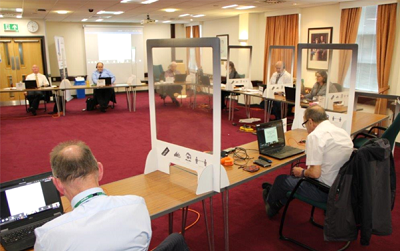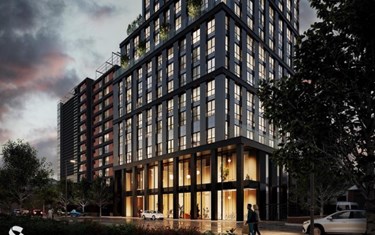 If you are working for a Local Authority Planning department your journey is probably very similar to mine but I thought I would share my experience as to how we are adapting to almost fluid changes in requirements whilst ensuring local services and functions are delivered. As a Chartered Planner and Service Manager at Sedgemoor District Council it was a priority to maintain the flow of applications through the system and the positive and proactive relationship we have with developers to enable sustainable growth, and support the public and businesses particularly given the economic impacts felt. We evolved the committee process twice since last year to enable decision making, economic recovery and ensure accessibility and inclusivity for architects/agents and the third parties.
If you are working for a Local Authority Planning department your journey is probably very similar to mine but I thought I would share my experience as to how we are adapting to almost fluid changes in requirements whilst ensuring local services and functions are delivered. As a Chartered Planner and Service Manager at Sedgemoor District Council it was a priority to maintain the flow of applications through the system and the positive and proactive relationship we have with developers to enable sustainable growth, and support the public and businesses particularly given the economic impacts felt. We evolved the committee process twice since last year to enable decision making, economic recovery and ensure accessibility and inclusivity for architects/agents and the third parties.
March 2020 saw the UK order go from ‘business as usual’ to remote if you could manage it, or closed. For Local Authorities closure was not an option so early 2020 meant throwing away all the old process notes and rediscovering how to perform the same functionality ‘virtually’. We had to look at how to ensure the public had online visibility of planning documents throughout the process and at how we were validating and determining applications. Through emergency legislation introduced by Government planning committees were allowed to take place virtually, using video/telephone conferencing. Sedgemoor District Council ran its first ‘virtual’ planning committee on 19 May 2020 through Skype. To catch up on the back log of planning applications and maintain decisions these launched weekly for the first month, dropping to fortnightly and then adjusted to our pre-lock-down monthly pattern.
We were not the first to run virtual committees so we were able to look at what other local authorities were doing and adopt best practice. In doing so we were able to take on board potential security concerns and determine our processes to ensure virtual committee attendance was pre-booked ahead of meetings and access controlled through democratic services.
Initially Officers presented remotely to the Committee and members of the public were provided with PowerPoint presentations ahead of the meeting to follow the case. This evolved during lockdown when Sedgemoor changed to Teams and members of the public were able to join the meeting and see the live presentations with the rest of the committee. PDFs of the PowerPoints are still available ahead of the meetings for the public.
Almost exactly a year on due to the cessation of the temporary rights that enabled meetings to be virtual, Local Planning Authorities found themselves having to reconsider the committee process once again. For Sedgemoor this was further complicated by the renovation works that are currently underway at Bridgwater House, restricting access through our reception. We have a Planning Committee of 15 members and given the size of the meeting room and to comply with regulations in respect of social distancing there was a cap on the number of attendees at any given time to 25.
Tables were set out in a wide horseshoe with protective screens between desks and members logged into the meeting as they would have done at home, although the meeting was presented on screens around the room to ensure all had sight of the presentations while the committee papers could be viewed on the laptops. Members of the public had the right to attend in person or virtually and the majority choose the later.
With all members and officers ‘plugged in’ to the meetings with headsets and mics it became apparent that members of the public attending ‘in person’ would benefit from the visual but not the audio of the meeting. A smart screen was added and connected to the meeting to enable visual, audio and recording of members of the public speaking as part of the ‘virtual’ record.
Our next changed to ensure as there was only one member of the public in attendance they were be provided with a laptop enabling participation in the same way as our council officers. If there are multiple in person attendees a viewing space and one way system for public speakers will be imposed, in between desk cleaning. This will address the audio delay experienced as a result of the smart screen. Evolving the ‘right’ approach for hybrid meetings is a fluid thing and dependant on the facilities of each authority with many having to hire larger venues or some delaying committees to allow time for set up. The benefit of trying is the experience you gain through it and the improvements you make for future meetings without delaying the progress of current cases.
The format of this meeting and the requirement for screens and social distancing will hopefully reduce in time further easing the ability to continue to determine applications. Until then I am very proud of how receptive everyone involved in the process (Members and public) have been with embracing the technology to enable continued growth and not lose the benefits of accessibility through remote access.


